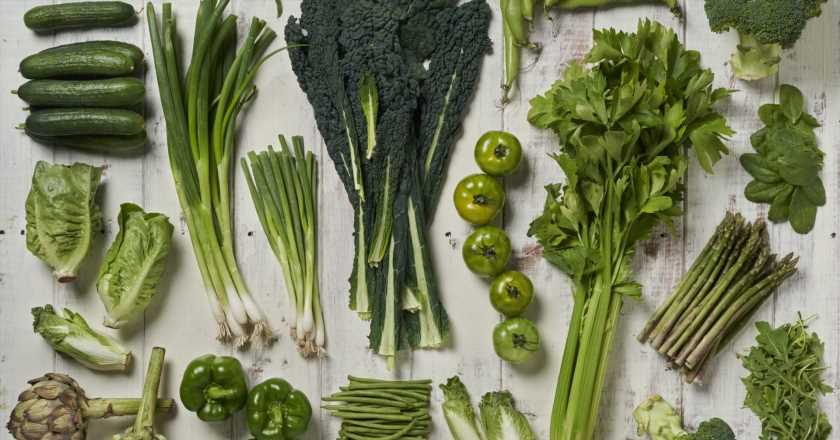Here’s how to do Veganuary successfully, according to a nutritionist
Feeling hungry all the time? Craving cheese already? Bored of your meals? Then this handy expert-led guide to veganism is for you.
Veganuary is getting bigger and better every year, with more people pledging to go plant-based, supermarkets expanding their vegan ranges and restaurants putting on veg-first offers. That dramatic growth isn’t to say that going vegan is easy or simple. In fact, getting it right can be quite a challenge – especially if you’re new to animal-free living.
If you think that all you have to do is ditch the meat and dairy, then you may well run the risk of feeling hungry, tired and bored. Beyond making you tetchy and slow, that can also impact your ability to stick with veganism, vege/flexi-tarianism or simply eating more plants.
You may also like
Veganuary: “Everything I learnt about vegan nutrition from fitness food subscription”
Common Veganuary mistakes
People tend to make three main mistakes with Veganuary, says Sophie Dillon, nutritionist at Fresh Fitness Food, the UK’s leading personalised ‘ready-to-eat’ meal delivery service.
Doing too much, too soon
The first is making changes too quickly. “It’s important to make changes gradually,” she tells Stylist. “If that means starting with meat-free Mondays, that’s great. We don’t have to change everything all at once for it to count.”
Failing to prepare
The second is going into Veganuary without adequate prep. It takes a little more time to think and plan meals to make sure that you’re getting all the nutrients you need. “Take time to stock your cupboards with the ingredients you need,” Dillon says, “and try to bookmark some recipes you’ll look forward to trying before you get stuck not knowing what to cook or eat.”
Struggling for inspiration? How about starting the day with these immunity-supporting raspberry breakfast muffins or brunching on some vegan shakshuka? Have a go at this maca and butternut squash risotto for a warming lunch and dine on inflammation-fighting, plant-based pizza.
Working from a place of loss
Perhaps the biggest issue with chat around going vegan is the idea that you’ve got to lose things from your diet – something that may be quite triggering for those of us who have been brought up in the thick of diet culture. Dillon recommends focusing on “all the amazing and delicious ingredients you can add into your diet and the tasty recipes you can create with them” rather than what you’ve had to remove from your diet.
How to thrive on a plant-based diet
Veganuary may just be a month but the aim to eat more plants and consume fewer animal products should be a year-long ambition. To do that, you’ve got to nail your nutrition and mindset.
One issue many people coming to plant-based eating complain about is feeling constantly hungry and that’s because when you switch to a vegan diet, you’re eating more veg, fruit and pulses – all of which are lower in calorie-density than animal products. That means, Dillon explains, you’re going to need to be eating more of those foods to get the same energy as you did previously.
But eating salads and fresh fruit isn’t going to be enough. “It’s also important to include some higher-calorie density food (sources of dietary fat) in your diet too, such as nuts, seeds, avocado and olive oil, as well as plenty of protein – the most satiating of the macronutrients,” she says. You can find plant-based protein in quinoa, tofu, tempeh, seitan and peas.
You may also like
What it’s really like to go vegan for a year
It’s also important to remember that just because something is vegan, that doesn’t automatically make it ‘healthy’. You want to base your meals around wholefood ingredients rather than plant-based burgers and plastic-y cheeses, which tend to be high in saturated fat, refined sugar and salt. She says: “Base your meals around ingredients such as lentils, chickpeas, grains, vegetables, nuts, seeds and fruit. Make sure you consume as much variety as possible.”
She also advises really thinking about what nutrients you need and where you might get them from. “Take care to obtain specific nutrients through the food you are eating, such as protein, calcium, iron and zinc, or through supplementing vitamin B12, vitamin D and omega-3.”
A nutritionist’s vegan hero ingredients
Fill your cupboards and fridge with Dillon’s food heroesand you’ll be well on your way to plant-based peace.
Chickpeas
“Chickpeas are a great plant-based source of protein and are so versatile. Anything from curries to stews to hummus to plant-based omelettes prepared with gram flour… the humble chickpea is your hero!”
Mushrooms
“Not only do mushrooms provide a wide-range of health benefits, such as supporting a healthy immune system, but they can also provide a unique meaty flavour and texture when cooked, which can be great for those missing meatier alternatives.
Quinoa
“From providing a delicious base for a summer salad, a higher protein alternative to rice for serving with curry, to a warming bowl of quinoa porridge on a winter morning, quinoa can be a really versatile ingredient. Not only that but it’s one of the few complete plant-based proteins we have available.”
Tofu
“A classic plant-based go-to, tofu is not only delicious but provides a range of nutrients for anyone following a vegan diet. Soy-based products are a great source of calcium, which is essential for maintaining bone and muscle health. It is also another example of a complete plant-based protein.
Engevita nutritional yeast
“It’s a great alternative to using cheese, or vegan cheeze. Nutritional yeast provides a rich, salty, cheesy flavour and it’s delicious over pasta, on pizza, or sprinkled on soups and stews. Make sure you purchase the fortified version (blue packaging) for the added benefit of vitamin B12 – an essential nutrient which we cannot obtain from plant-based foods alone.”
For more plant-based recipes, check out the Strong Women Training Club.
Images: Getty
Source: Read Full Article
